- Introduction to the Ford 10R80 Transmission
- In this Drivetrain 101, we will be addressing
- Ford 10R80 Product Resources
- Popular Transmission Information Resources
- A Brief History of the 10R80 Transmission
- How the 10R80 Clutch Packs Work
- Problem #1 - The Torque Converter
- Problem #2 - The Valve Body
- Problem #3 - The Oil Pump
- Problem #4 - The "E" Clutch Assembly
- Problem #5 - The Oil Pan
- Problem #6 - The "B" Clutch Assembly
- Problem #7 - The C-D-F Drum Assembly
- Frequently Asked Questions about the 10 Speed Ford 10R80 Transmission
- Conclusion to the Ford 10R80 Transmission

Introduction to the Ford 10R80 Transmission:
If you're a late model Mustang or Ford full-size truck/SUV owner, you may very well know that Next Gen Drivetrain has been vehemently engaged with the 10R80 transmission, building them for a diverse spectrum of applications. All to often, we are approached with question after question about this highly complicated transmission; ranging from what fails to why and how. Fortunately, we've fulfilled this demand with an installment in our popular Drivetrain 101 series.
It should be noted that this transmission is the fraternal twin to the General Motors (GM) 10L80-E and 10L90-E transmission, fitted to the corresponding years of General Motors passenger vehicles. This product was engineered as a joint venture between Ford and GM. They are slightly different, in that GM owns multiple intellectual property items that they've implemented to their version of this transmission, as did Ford. Because of this, they are not identical.

Our goal is to educate, inform and support the Ford 10-Speed market with high quality data and facts about their transmission. As transmissions and vehicles in general become ever more complicated, it's important to educate yourself on how these mechanisms operate. If you want to become an expert on the 10R80 transmission, this Drivetrain 101 is for you!
In this Drivetrain 101, we will be addressing:
- The most popular failures we witness on the 10R80 transmission
- Ways to get the most out of your transmission
- The strengths (believe it or not, there are a few!) of this transmission
- Resources for relevant updates and upgrades
And much, much more!
Ford 10R80 Product Resources:
- 10R80 Transmissions
- 10R80 Torque Converters
- 10R80 Rebuild Kits
- 10R80 Valve Bodies
- 10R80 Parts
Popular Transmission Information Resources:
- Top 5 Benefits of an Upgraded or Built Transmission
- Calculating Torque Multiplication Factor, Why is it So Important?
- Top 5 Ways to Extend the Life of a Factory Transmission
A Brief History of the 10R80 Transmission:
Prior to 2017, the bulk of RWD and AWD Ford passenger vehicles came with the respectable 6R80 Transmission. Unfortunately, as the ferocity of these motors increases, the 6R80 transmission quickly became ill equipped for the job. Because of this, Ford (and GM) had to pursue a new option. Due to their massive capital reserve, Ford was able to engineer their own transmission just as they did with it's predecessor.
After years of research and development, out came the 10R80 transmission. The new 10 Speed is able to hold some more power, using more robust components internally. Additionally, it is designed to keep the motor inside a narrow operating range to favor efficiency. 10 Speed transmissions, in general, largely just exist as an appeasement to the EPA. It could easily be argued that a stronger 6R80 would have easily sufficed.
At this time, there is no foreseeable successor to the 10R80 transmission, it is likely to stay with us for the next few years. But, despite it's various enhancements over it's predecessor, the 10R80 transmission is not perfect. In fact, many people experience a rapid decline in transmission health with so little as 33" tires (sorry Raptor guys), nevermind removing emissions components or using a tuner (sorry Mustang folks too). Although we love power as much as you do, we must be sober about the fact that power leads to broken transmissions much sooner. Fortunately, we will discuss how to resolve this later in the study.
How the 10R80 Clutch Packs Work:
Like nearly all electronic transmissions, the 10R80 transmission uses a shift map using various factors such as engine load and accelerometer input to calculate shift decisions without your input. Very similar to it's GM counterpart, the 10R80 uses a form of adaptive shift protocol to optimize for smooth shifts. The onboard computer is constantly trying to advance or delay solenoid activation to support this goal. Sound complicated? It is.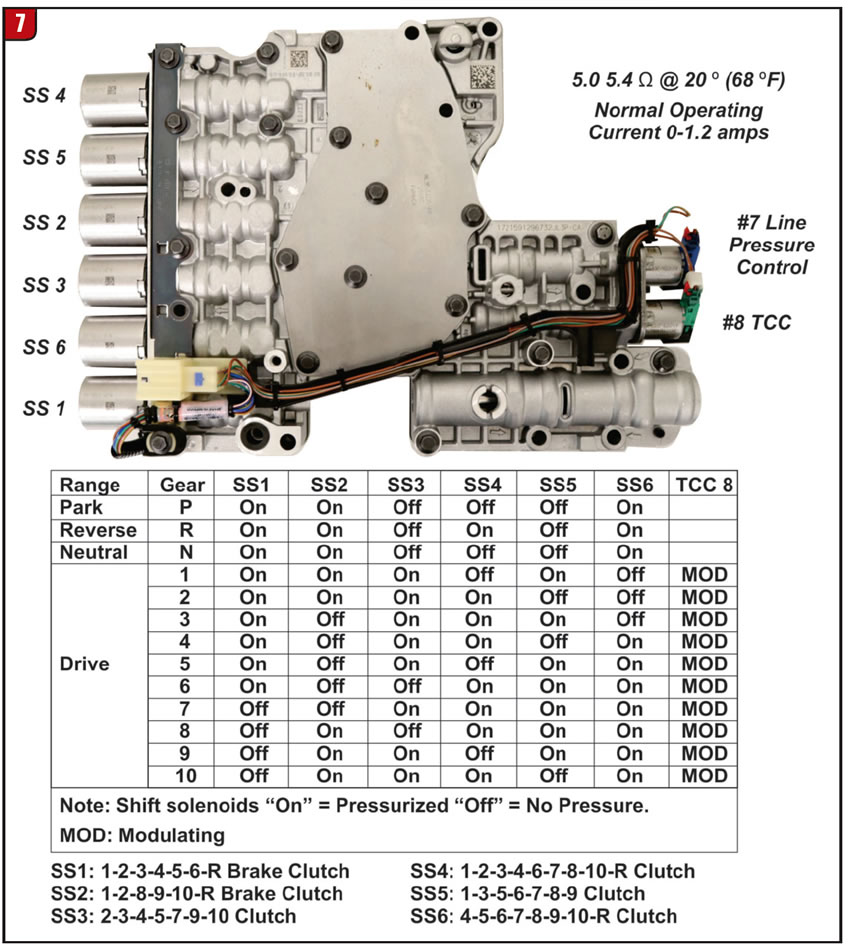
Here, we can see a solenoid application chart. As one could see, there are MANY different solenoids in this transmission, all designed to operate in a complex and cohesive fashion. Naturally, this intensely complicated system can be prone to prolific electrical issues as well as valve bore wear issues, largely because of how many of them there are. Many clients report clunky, poorly timed or "confused" shift behavior as these problems present.
As a clutch to clutch style transmission, this means that the 10R140 does not use any bands, servos, levers, anchors or struts to activate any of it's functions. This is not necessarily a benefit or a drawback, but rather just a useful piece of information. Band & Servo style units were discontinued years ago due to their general inability to be electronically controlled. As we have all seen over the past years, OEM's are eager to electronically control transmissions. Now that we've learned about these foundational facts, we can analyze the problems of the 10R80 transmission and how to resolve them.
Problem #1 - The Torque Converter
Similar to the GM transmission, the OEM torque converter is very unreliable as a result of it's non-flat friction surface and embarrassing stator assembly. Fortunately, the impeller hub, which is the piece that splines into the oil pump, is massive and very unlikely to break. Granted, it's not invincible, it's just stronger than many historical converters manufactured by Ford. We do offer a billet CNC machined hub on our torque converters, so this concern is nil with our product.
More prolifically, the converter clutch fatigues, flexes and burn over time. They're quite fine on day one, but notorious for longevity issues. It's extremely different to the 6R80 in terms of the torque converter lockup clutches and how they work. To some consolation, the 10R80 is a line pressure monster, producing ample pressure to hold the clutches together assuming no other collateral failures take place.
Additionally, the OEM stator, the component responsible for controlling stall speed, is absurdly thin and flimsy. This was designed this way to conserve costs in mass production, something that seldom if ever benefits the end user, you. All of our 10R80 converters feature a billet stator, revoking this concern from our valued clientele.
Lastly, and as a collateral effect of the stator, the OEM converter escalates average operating temperature (AOT) by a considerable margin because the large allowable difference in speed between the motor side and the input shaft side of the converter is so immense. This generates huge amounts of thermokinetic energy, a chemical reaction producing heat. Heat is a silent killer in the transmission world, and detracts from the longevity of any transmission.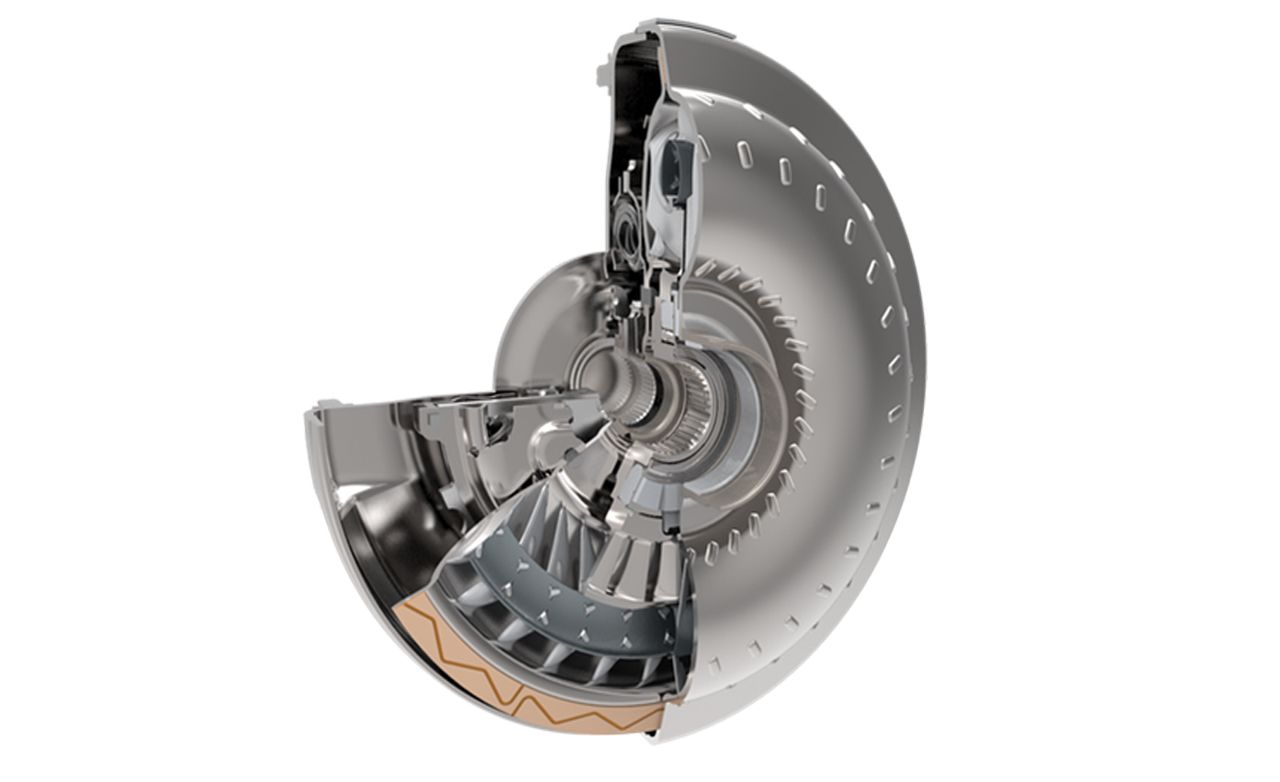
Problem #2 - The Valve Body
As with many transmissions, the 10R80 transmission's valve body is a huge cause of it's demise. Valve bodies are naturally complicated hydromechanical mechanisms with a huge concentration of moving parts and electronics. This makes them probable targets for internal crossleakage, solenoid failure and other similar problems that are notorious for cooking transmissions to death.
Firstly is the pressure solenoids inside the valve body. There are many of them as nearly all functions of this transmission are controlled by a switch or solenoid. As with most mechanisms, more moving parts means more things that can break. Generally, these solenoids are reliable, however they are often victimized by internal crossleakage inside the valve body that puts undue stress on the electronics by trying to push them on when the onboard computer believes they should be closed, or vice versa.
Additionally, the valvetrain inside the valve body is quite abundant, featuring dozens of moving parts. Every valve is a potential leakpoint. This would not be of concern if the transmission's valve body featured steel valves or anodized protective layers on the exterior of said valves, but unfortunately they are not. The valves are manufactured out of a low cost aluminum alloy designed to minimize cost at volume, leaving them susceptible to bore wear over time.
Further, the separator plate inside the valve body does not favor fast and efficient shifts. In fact, the separator plate contributes to many "sloppy" shifts by featuring unfavorable oil geometry when oil is trying to reach oncoming clutch packs. We expedite oil flow into oncoming clutches by making substantial modification to the OEM separator plate. To be fair, the OEM separator plate is rather thick and difficult to flex, but is inferior in other ways as mentioned. This makes modification of the OEM plate the most favorable way to ensure reliability as well as peak operability.
Problem #3 - The Oil Pump
Much akin to the GM 10L80-E & 10L90-E transmissions is the 10R80 transmission's oil pump. The high pressure oil pump inside this transmission is incredibly complicated for no visible reason. It features dynamic veins and a rotating wheel driven by a steel gear with it's own filter. This design is generally reliable but requires abundant filtration to maintain said reliability, making regular service important.
In terms of failure, the OEM transmission tends to shed a large amount of friction material over time due to the low quality friction elements used from the factory and the intense amounts of clutch drag they suffer from due to their slow engagement and sloppy shifts. This naturally exacerbates and accelerates the wear issue of the OEM oil pump in unmodified 10R80 transmissions.
In addition to this, the 10R80 oil pump is notorious for losing oil pressure at the top end as this problem begins. This causes the transmission to shift erratically or sloppily under full throttle or with loads being towed. There beyond, these transmissions rely on oil pressure to calculate their shift behavior, contributing to tremendous confusion of the onboard computer whilst adapting to your driving patterns. This is one of many reasons the factory 10R80 transmission's shift strategy is so unpredictable.
Problem #4 - The "E" Clutch Assembly
As the commonalities amongst the GM 10L80-E & 10L90-E and the Ford 10R80 transmissions grow, we must mention the "E" clutch assembly. Although this clutch assembly does not have the highest torque multiplication factor, it does have a rather high one as it is used in most overdriven gears. The reason it is so quick to fail is because of a combination of this and the fact that the clutches are rather small in surface area.
Similar to the reason a car's smaller rear brakes do not provide as much stopping power as the larger front brakes, small friction plates offer less synchronization power than large ones. As a result, the "E" clutch assembly is disadvantaged from the factory. Granted, the OEM is not incentivized to provide over-built transmissions to the consumer, but rather transmissions that are low cost to produce and generally sufficient to see customers to the end of their warranty period providing they do not modify or overuse the vehicle.
Fortunately, we use a host of modifications to the valve body to enhance oil pressure to the "E" clutches as well as modify the separator plate to bring these clutches on much faster. The decrease in synchronization time enhances both shift quality AND longevity. It is unfortunate that the OEM did not care to provide benefits like this to the consumer.
Problem #5 - The Oil Pan
As an expensive 10 speed transmission, it is exceptionally important to maintain low oil temperatures to preserve the longevity of the transmission. From the factory, the OEM saves money by stamping the oil pan out of thin plastic using a mold and a special tool to provide accurate shape. This is never optimal, but certainly does not endorse a healthy transmission for heavy duty applications or long term use.
In fact, the OEM oil pan is so lacking in volume that a variety of transmission pan manufactures have added in excess of a gallon to the oil volume of this transmission. Due to the obvious nature of this upgrade, it is standard on ALL Next Gen Drivetrain 10R80 transmissions to contain a cast aluminum deep pan. Expect cooler AOT (average operating temperature) with our built 10R80 transmissions.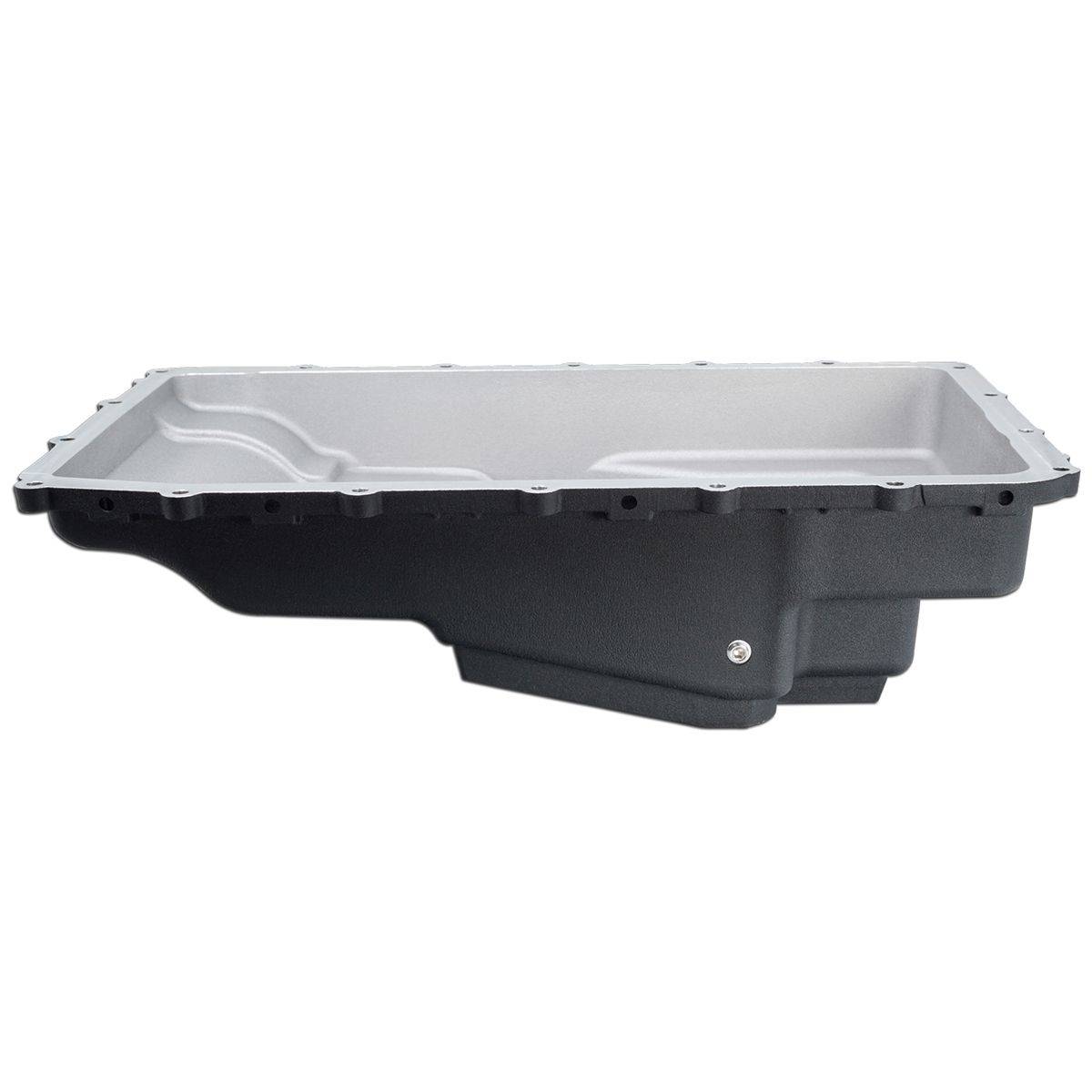
Another lost benefit when operating with an OEM oil pan is the lack of structural support to the case. Cast aluminum deep pans function as a "girdle" that supports the case to prevent flexion, greatly decreasing the potential for a broken case. Although broken cases are not very common to this transmission, it does exist and should be noted. A cast aluminum deep pan virtually eliminates this concern.
Problem #6 - The "B" Clutch Assembly
As the clutch pack active for 8th, 9th and 10th gear, the "B" clutch assembly features the greatest torque multiplication factor of any clutch pack inside the 10R80 transmission in most conditions. Much as the "E" clutch assembly suffers from inadequate apply pressure and inadequate oil feed rates, so does the "B" clutch assembly.
The "B" clutches are intermediate in size and would certainly be successful with access to better shift strategy and oil geometry, but unfortunately, the OEM does not provide this. The oil feed orifice inside the OEM separator plate is physically larger in Next Gen 10R80 transmissions, giving this clutch pack a far better chance at life.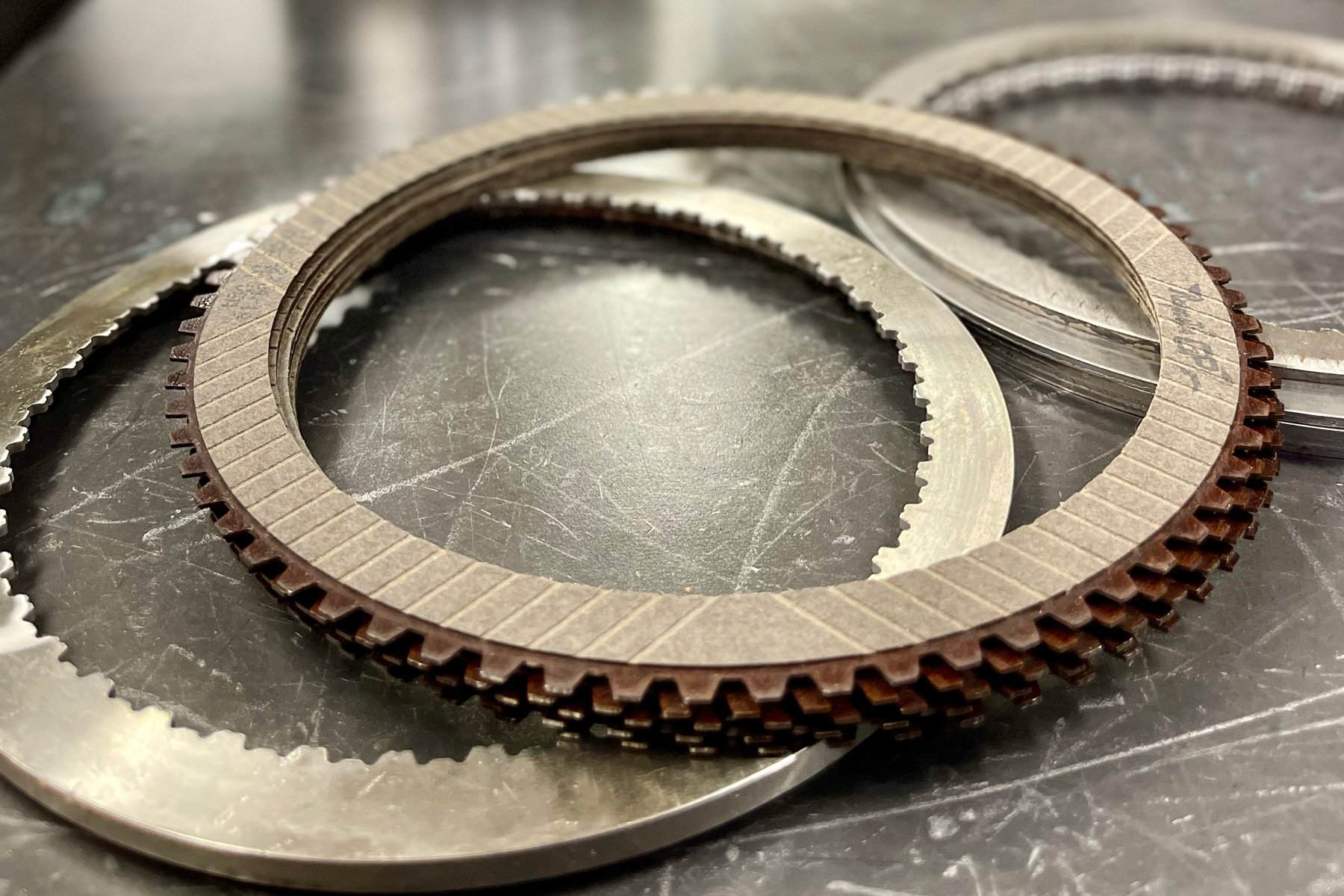
To augment these efforts, the pressure regulator valve spring is also changed to require greater oil pressure before venting. This means more oil reaches the clutch pack, in a more timely fashion, tendering the support necessary for this transmission to endure the use of a more powerful or heavily used vehicle. Although all clutch packs are enhanced in some way in our product, it is important to highlight clutch packs such as "B" which are exceptionally at risk.
Problem #7 - The C-D-F Drum Assembly
Perhaps the most common problem we encounter, tied with valve body failure, is the bushing of the C-D-F drum assembly being forced out of place by excessive heat and pressure. This deprives half of the transmission of fluid pressure, causing near instantaneous failure. This problem is exacerbated by large tires, added power, frequent towing and many other things, although not partaking in these activities does not save you either.
We are proud to say that we resolved this issue almost immediately the same way we did in the smaller 10R80 Transmission. There are 2 necessary solutions to prevent this problem, both of which are standard in all 10R140 transmissions we offer.
Firsly, we increase the lubrication pressure in this valve body, the oil used to keep the transmissions inner workings cool, by 300%. This helps regulate the extraordinary heat that causes this bushing to travel in the first place. Secondarily, we machine a lip into the C-D-F drum assembly to keep the bushing in place regardless of circumstance. This problem has NEVER been recorded in a Next Gen Drivetrain product.
Frequently Asked Questions about the 10 Speed Ford 10R80 Transmission:
Q: Is the Ford 10R80 a good transmission?
A: Known as a less-than-reliable unit, the 10 Speed Ford 10R80 transmission is a fertile breeding ground for a variety of problems. This includes but is not limited to: Valve body crossleakage, burnt clutches, damaged clutch hubs, stripped shells and much more.
Q: Is there TCM Tuning for the 10 Speed Ford 10R80 transmission?
A: Yes! The 10 Speed Ford 10R80 can be easily tuned to request different shift points, different lockup protocol and various other functional changes. However, most of these parameters do not need to change for the transmission to work optimally. Mechanical upgrades are significantly more important.
Q: What is the lifespan of a 10 Speed Ford 10R80 Transmission?
A: Although there are many variables, the 10 Speed Ford 10R80 transmission lasts an average of 100,000 to 150,000 miles in unmodified trucks with average applications. Trucks with larger tires, tuning, emissions delete systems and other aggravating factors usually fail much sooner. Transmissions with religious maintenance routines that are used largely for highway miles can last longer in some cases.
Q: What is the best upgrade for a 10 Speed Ford 10R80 transmission?
A: The single most important upgrade someone can perform on a 10 Speed Ford 10R80 transmission is a valve body. The valve body is where the overwhelming majority of their problems begin, and can yield huge benefits to any application. All Ford 10R80 transmissions, regardless of application, should have one of our upgraded valve bodies.
Q: What are the service intervals of a 10 Speed Ford 10R80 transmission?
A: It is our advice that this transmission is hot-flushed and a complete fluid and filter change is executed every 25,000 miles on average. Extraordinary applications may want to perform these services more frequently, whereas highway exclusive applications can safely push a bit further between services.
As one could see, the 10R80 transmission is lacking in mechanical and hydraulic quality. This transmission was never meant to be a "premium" option, but rather a high volume, economical option that favors EPA regulation. Fortunately, Next Gen has been adamant about bridging the gap between this naturally inferior transmission, and it's potential for tremendous success and reliability. Have questions about the 10R80 transmission? Call in and speak to one of our experts today!
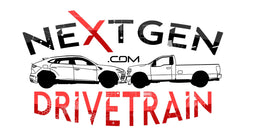





Comments (37)
I bought my 2019 F150 4×4 with 700 miles it was a demo everything was great and I love the truck but when I hit 35,000 miles I started hearing a noise when the truck would shift kinda sounded like putting rocks in an empty soda can and shaking them around. I took it into my local ford dealer and they said they reprogrammed the software in the transmission to see if that helped. It helped for a while but then the noise came back and got even louder took it back to the dealer and they said that’s how the transmission sounds when it shifts. I have owned alot of trucks but I have never heard that explanation before and it didn’t sound that way when I first bought so something must be wrong! Needles to say I now have 79,000 miles and it hasn’t let me down yet, what could possibly be the problem? Does it need a rebuild already? I hate the 10R80 trans! Should of stuck with a chevy!
My 2027 F-150 doesn’t shift properly. I have to use the sport mode to get the gears to drop down. I would like to get into contact with someone there to help me get a bigger pan and some of the other important upgrades.
Need a good 10r80 for my 2018 f150 ecoboost
I have a 2022 F-150 3.5 EcoBoost V6. Right out of the BOX with about 300 Miles on the ODO, I started hearing a Knocking noise at low speed with RPM’s around 1900 to 2100. It’s hard to describe but long story short, the 3rd Dealership “Finally” Diagnosed the Issue down to the Transmission, (10R80). They replaced the Complete Transmission in my truck at 4700 Miles, Due to Other Dealerships not Diagnosing the Issue properly? Both said it was the Hi Pressure Fuel Pump (HPFP)? The Issues other than the NOISE concern before the Replacement were, Clunky shifts from 5th 4th down to 3rd, and Just Clunkiness all through the Shift’s up and down 1 through 10. Now, the New Tranny with about 1100 Miles on it is “Better” However it STILL has the Clunkiness, Especially around 3rd Gear, but still seems to have (I guess you’d call it Flaring) around the 7th gear and Up with Mild Throttle to Moderate. Being that I am and will be Under Warranty for a WHILE, (Have FORD’S PREMIUM EXTENDED WARRANTY) for what that’s worth. If I had my way, I would Purchase one of NEXT GEN DRIVETRAINS Units and just be done with it! However, I don’t have the $$$$ to do it with and FORD probably wouldn’t Install it anyway. So, I “GUESS” I will deal with whatever comes down the ROAD, this last Visit my Truck was at the Dealership for Nearly THREE WEEKS?? I just wish FORD would do “SOMETHING”. It’s rather Inconvenient leaving my TRUCK at the Dealership for WEEKS at a Time, Only to NOT BE “FIXED”, but have Bandaid’s Installed?? I’am retired and waited 65 YEARS for this time in my life, and this BRAND NEW TRUCK is My FIRST NEW TRUCK “EVER”!!! It’s a Shame to know that there’s a FIX for this Issue, but I can’t Implement it due to FACTORY B. S. and I can’t afford it…. 🥺. GREAT Stuff here NextGen. Thanks for at least Offering a PERFECT FIX for this Otherwise Problematic FORD Issue.
Do not buy a ford with a 10R80 transmission in it got a 2021 ford explorer 35k on it gone ford sucks
My 2019 Ford Ranger Lariat has the 10R80 transmission. The truck now has a little over 50,000 miles on it. I have been complaining to the Ford garage about surging and jumping when driving at low speeds. They have reprogrammed the PCM and replaced a module on the transmission, but the problem still exists. From what I read, this a problem common to most of these transmissions. I have had this problem since 43,000 miles. What do I do now?
My 2018 Ford F150 XLT has 48,800 miles and I have been told by the dealer my transmission pressure leak at the CDF Drum. I am out of power train warranty and was told cost of repair would be approximately $6000. They are suppose to contact Ford to see what they can do for me since it has low mileage, I bought it from the dealer and I took it in for rough shifting last year and they only updated the software but did not last and now I have this problem. Since I identified the problem to them while the power train warranty was in effect should they not cover this now?
I bought my Ford Ranger 2.3L 2023 about 2 Month ago and tbe Transmision has a delay down shifting and tends to vibrate because the Trasnmission needs to Down Shift to a Tronger Gear and it has a Brake issue Brake Pedal feels Spongy does no stop fast enough and i feel Unsafe with the Ford Ranger it has me very unhappy en Spanish Ford means (Fabricacion , Ordinaria , Rotura , Diaria)
My 2020 Ford Ranger began exhibiting transmission issues at 30000 miles. I saw a YouTube video on using Forscan with a laptop and adapter to the data link to turn off the adaptive transmission mode. Things improved after but not perfect. The transmission behaves better after a 2 mile warmup. Still worried about the future of this transmission so I’m scheduling an inspection with the dealership.
What would be considered an ideal maximum temperature for the fluid in a 10R80?